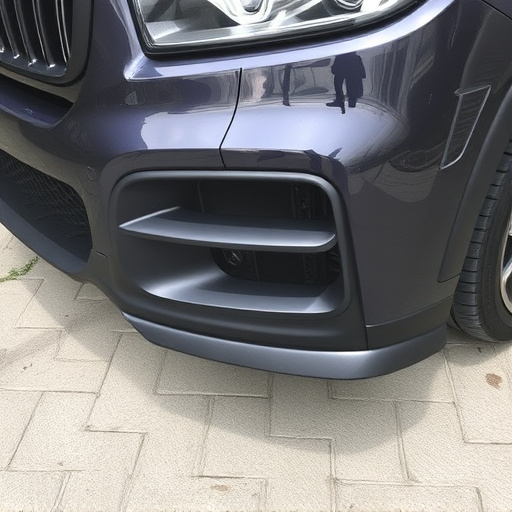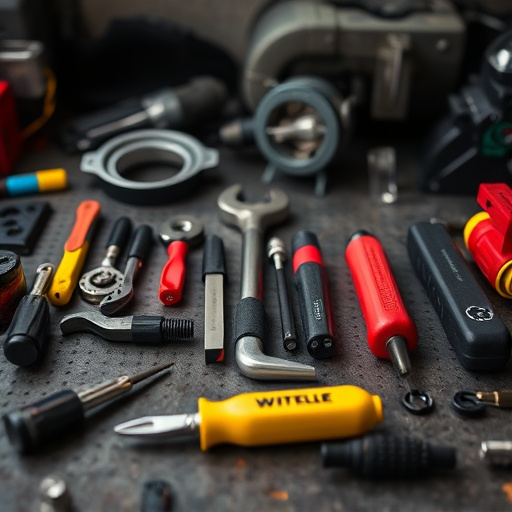To manage fog light repair services efficiently, adopt digital tools tailored for automotive repairs, focusing on job management, parts inventory, and client communication. Select applications with real-time updates and standardized data collection formats. Integrate these systems with existing software for streamlined operations. Measure success through client satisfaction and detailed documentation of each repair step, including damage assessment, parts replacements, and work hours, ensuring transparency and high service standards.
In today’s digital age, efficient tracking of service progress is paramount, especially in niche sectors like fog light repair. This article explores how digital tools revolutionize this process, offering a structured approach to managing repairs from initial assessment to final delivery. We’ll guide you through selecting the right software, implementing tracking systems, and measuring success through client satisfaction metrics. Embrace these strategies for enhanced transparency and improved service quality in your fog light repair business.
- Selecting Suitable Digital Tools for Fog Light Repair Service
- Implementing Tracking Systems: Steps and Strategies
- Measuring Success: Evaluating Progress and Client Satisfaction
Selecting Suitable Digital Tools for Fog Light Repair Service

When it comes to tracking the progress of fog light repair services, choosing the right digital tools is key. The ideal platform should cater specifically to automotive repair, offering features that streamline job management, parts inventory, and communication with clients. Consider applications designed for body shop services or tire services as well, as these often include modules tailored for various vehicle maintenance tasks, including fog light repairs.
Integrating such tools can significantly enhance efficiency within a car restoration process. They allow for real-time updates on job status, automatic reminders for follow-up tasks, and digital documentation of repairs, ensuring transparency for clients and simplifying administrative duties for the service team. With these digital solutions in place, managing fog light repair services becomes more organized and effective.
Implementing Tracking Systems: Steps and Strategies

Implementing tracking systems for fog light repair services involves a strategic approach to ensure efficiency and transparency. The first step is to choose the right digital tool tailored to your business needs. Consider platforms that offer real-time updates, allowing service providers to document each repair stage promptly. These tools should facilitate communication between technicians, customers, and managers, ensuring everyone is on the same page.
Next, standardize the data collection process. Create a structured format for recording details such as customer information, fog light damage assessment, repair techniques used, and estimated completion times. Standardization ensures consistency in reporting, making it easier to track progress and identify potential delays or issues. Additionally, integrating these tracking systems with existing management software can streamline operations, especially when managing a fleet of service technicians or a busy workshop.
Measuring Success: Evaluating Progress and Client Satisfaction

Measuring success goes beyond simply fixing fog lights; it’s about ensuring client satisfaction and tracking the overall progress of the repair service. By implementing digital tools, auto repair shops can efficiently monitor every stage of a fog light repair service, from initial assessment to final hand-off. These tools allow for detailed record-keeping, enabling mechanics to document the extent of damage, track parts replacements, and log work hours. This transparency benefits clients by providing them with clear updates on their vehicle’s condition.
Moreover, digital platforms often incorporate feedback mechanisms and client communication features. After a mercedes benz repair or any other vehicle repair services, including auto painting jobs, customers can rate their experience and provide comments. This data is invaluable for gauging satisfaction levels and identifying areas of improvement within the shop’s operations. Regular analysis of these metrics helps ensure that not only are fog light repairs carried out to a high standard but also that clients feel valued and informed throughout the entire process.
The integration of digital tools has revolutionized the way fog light repair services are managed, offering increased efficiency and transparency. By selecting the right software for tracking progress, service providers can streamline operations from initial customer interaction to final delivery. Implementing these systems involves a strategic approach, ensuring data accuracy and client communication. Ultimately, measuring success lies in evaluating progress, client satisfaction, and the overall enhancement of service quality in the fog light repair industry.














